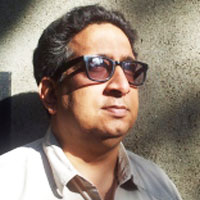Mustansir Dalvi
Tekton
Volume 2, Issue 1, March 2015
pp. 56 – 73
 Mustansir Dalvi is Professor of Architecture at Sir JJ College of Architecture, Mumbai. He has lectured, read and published several papers and books on architectural history and heritage. He is particularly interested in the development of Indian Modernism in the early 20th century, seen through its expressions in the architecture of the time. Mustansir Dalvi is currently a Doctoral Research Scholar at the Industrial Design Centre, IIT- Bombay. His field of research is the semiotic analysis of Bombay’s Art Deco buildings.
Mustansir Dalvi is Professor of Architecture at Sir JJ College of Architecture, Mumbai. He has lectured, read and published several papers and books on architectural history and heritage. He is particularly interested in the development of Indian Modernism in the early 20th century, seen through its expressions in the architecture of the time. Mustansir Dalvi is currently a Doctoral Research Scholar at the Industrial Design Centre, IIT- Bombay. His field of research is the semiotic analysis of Bombay’s Art Deco buildings.
ABSTRACT
The buildings on Bombay’s Backbay Reclamations that came up in the 1930s and 1940s are now considered icons of the city and are collectively referred to as ‘Art Deco’. Two sets of buildings – the ones facing the Oval Maidan and the Marine Drive in South Bombay best represent this appellation. While their exuberant facades and their (sometimes idiosyncratic) applied ornament invite appreciation and delight in contemporary viewers, they also form connotative repositories of a time of change and modernisation, and of an international and universal outlook developing in its citizens. In the current literature, these buildings have been largely studied from a historical / stylistic perspective, placing them synchronously in the development of Bombay’s / India’s architecture in the early 20th century.
We assert that an ahistoric re-examination, by reading these buildings semiotically as a system of signs, would elicit more useful meanings leading to a better understanding of the architecture of the period. With this in mind, we examine the facades of the Oval Maidan and Marine Drive buildings as agglomerations of semes (basic meaning trait or distinguishing quality) that connote references and concepts that express their age. Using analytical models from visual semiotics (described variously by Saussure, Greimas and Matozzi), we examine the facades as texts, breaking them down for syntax (the order of the elements) and collating the semes to form isotopies (repetitions of traits).
In order to articulate isotopy usefully, two terms are also coined- ‘enhancers’ or semes that synchronically work with architectural elements and ‘nuancers’, the diachronous, often iconic ornament-semes on the building. Semiotic isotopies formed by enhancers and nuancers are then analysed for connotative meaning to chart a narrative of the architecture. Through the uniform readings so found, we position the Backbay buildings as speakers for the city’s emerging modernity.
Introduction
The buildings of the Oval and the Marine Drive are part of a larger set of buildings erected during the 1930s and 1940s in Bombay and the rest of India, using mass produced materials such as cement, steel, glass and associated products. They share several features in common, and exhibit affinities in design and ornamentation. Collectively and retrospectively these buildings are referred to by a historic / stylistic appellation – Art Deco.
Previous studies of Bombay’s Art Deco architecture present a broadly historical viewpoint. To a large extent, they are placed in a stylistic chronology of Bombay’s / India’s contemporary architectural development, extending back from the late 19th century period of different ‘revivals’ through to the post-independence High Modernism of Le Corbusier and Kahn, and the Indian architects who came in their wake. In such a chronology, these buildings remain a historical punctuation rather than stand their own ground. We assert that contemporaneity is best seen on the facades of these specific buildings, which used both architectural elements and architectural ornament to convey the zeitgeist of the period. Modernity is valorised on their facades both overtly as well as unselfconsciously, reflecting the spirit of the age in the act of architecture. Current literature does not examine the facades of the buildings in this light but more as decorative or ornamental tropes, en-vogue at the time. This is a gap we attempt to address through this paper.
Thus, by looking at the buildings of the Backbay reclamation through an ahistorical (semiotic) lens, we seek to find expressions of a city in the throes of modernization. These expressions can be best observed on their facades. We attempt this by examining the formal qualities of the buildings as well as various denotative and connotative elements on the facades, collating semes (a basic meaning trait or distinguishing quality) to form isotopies (repetitions of traits). Using analytical models from visual semiotics (described variously by Saussure, Greimas and Matozzi), we read the facades as texts.
In order to articulate isotopy usefully, two terms are also coined- ‘enhancers’ or semes that synchronically work with architectural elements and ‘nuancers’, the diachronous, often iconic ornament-semes on the building. Semiotic isotopies formed by the enhancers and nuancers are analysed for connotative meaning to chart a narrative of the
KEY WORDS:
Bombay, Art-Deco, Semiotics, Isotopy, Semes, Syntax, Modernity, 20th Century, Enhancers, Nuancers

